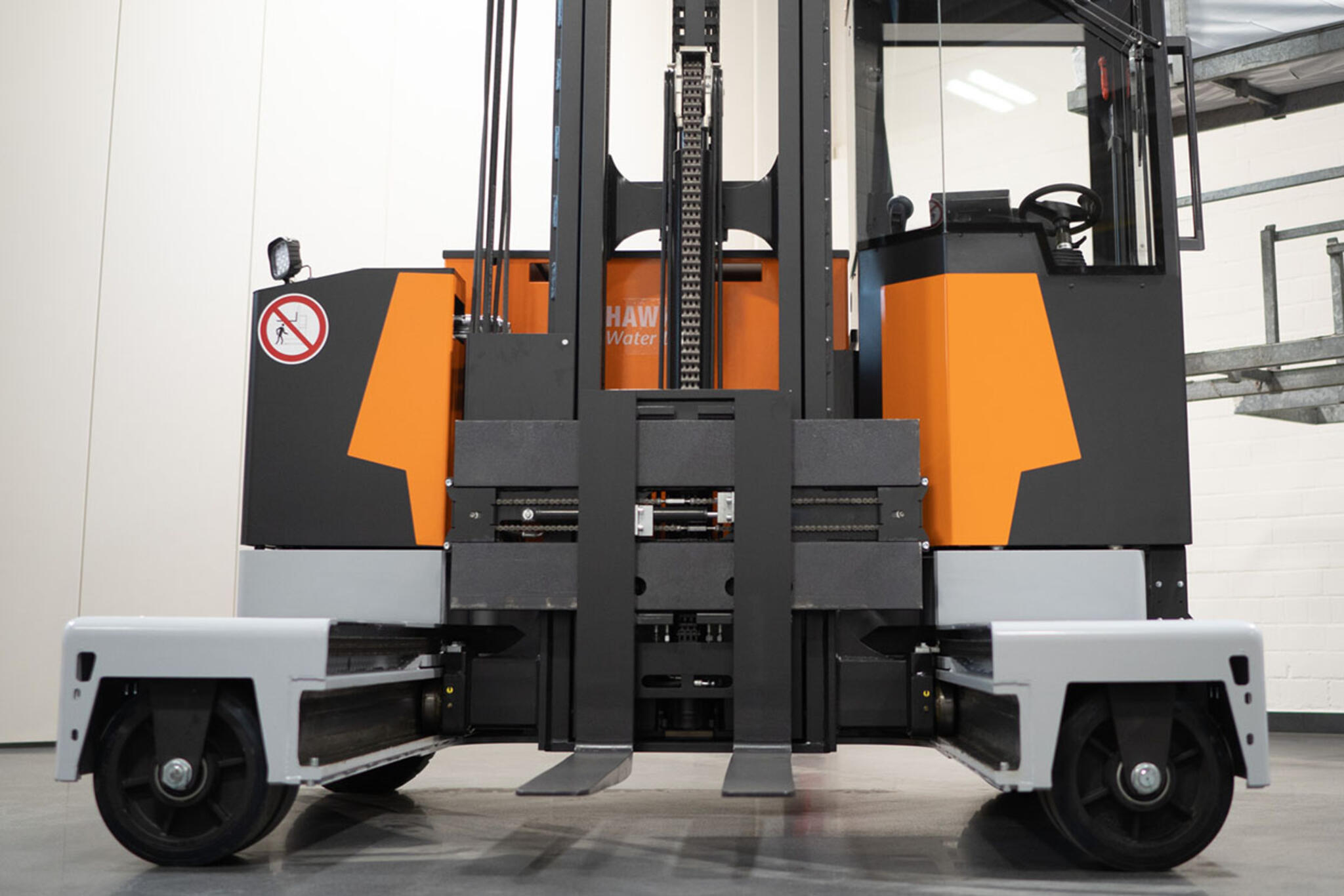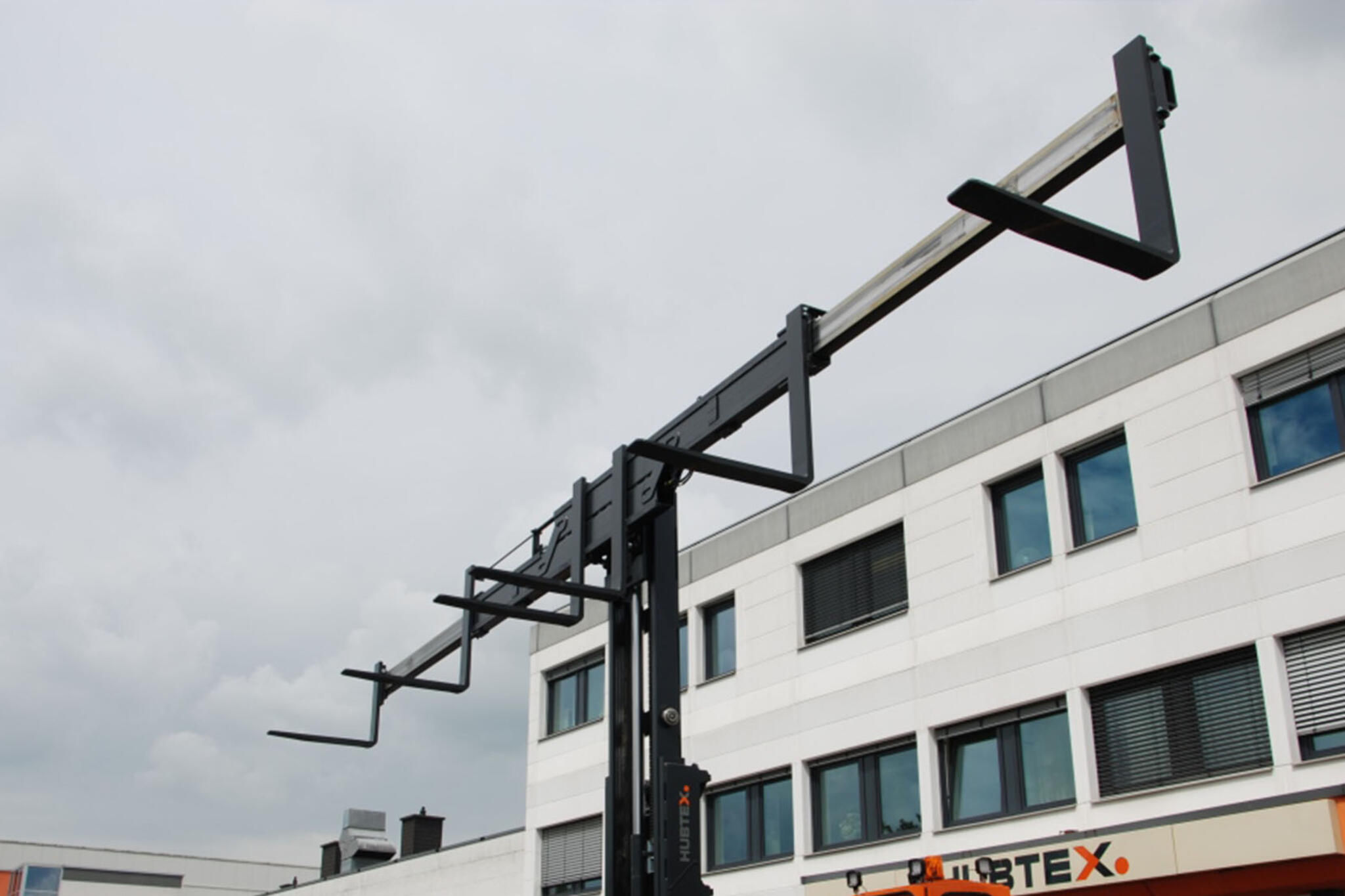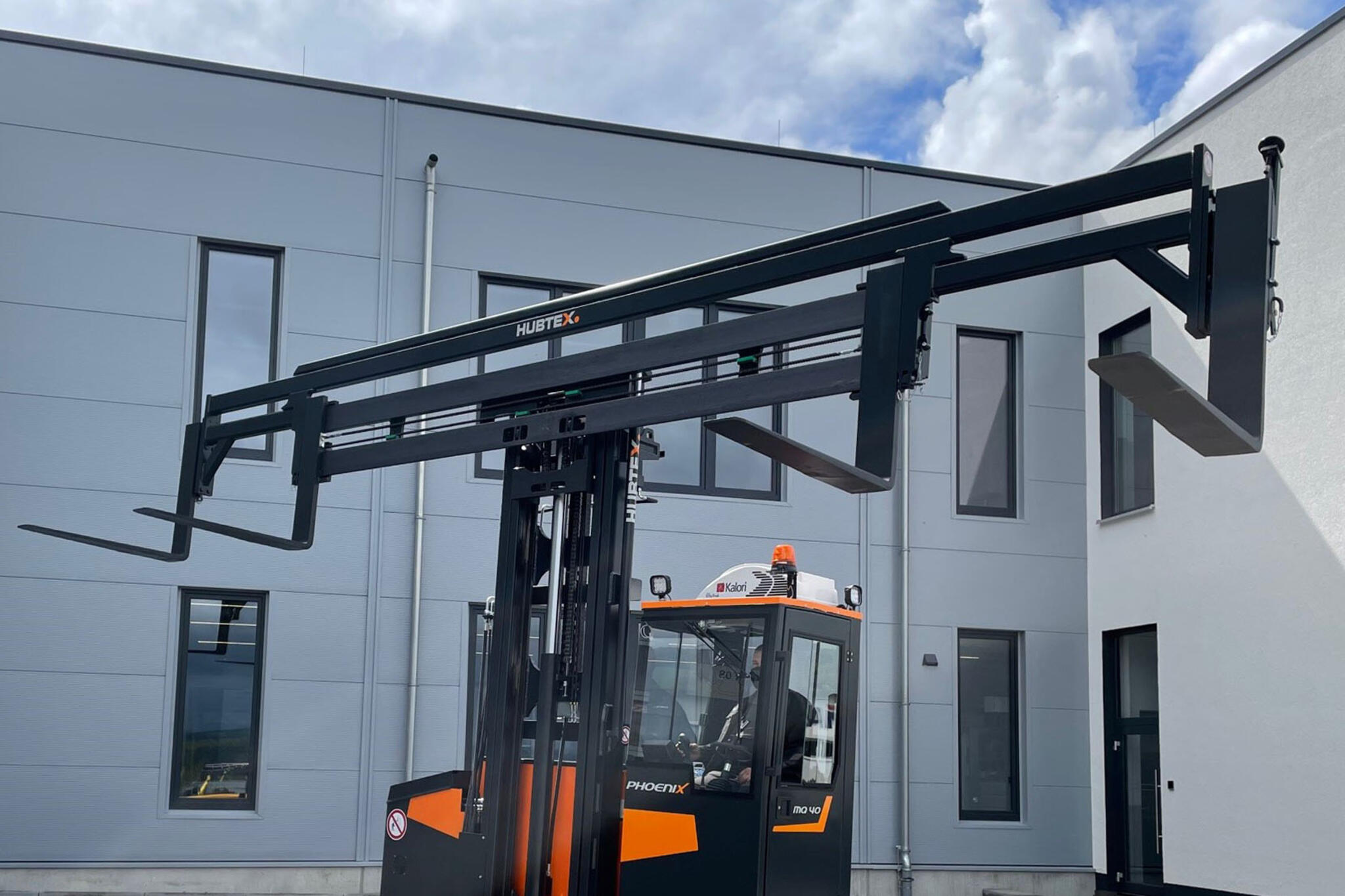The lifting unit is a crucial element of every forklift truck. The lifting unit consists of the lift mast and the fork carriage, which runs along the guides and can be moved up and down, and in some cases sideways, in a controlled manner with the help of hydraulic cylinders and a link chain. The fork carriage is a steel structure to which the load carrier is attached. The fork carriage is mounted on the fork carriage slide. The component is mounted in such a way that it can be moved vertically on the mast. The fork carriage carries the forks, which are often referred to in the field as pallet forks. This is why forklift trucks are sometimes referred to in Germany as pallet transporters.
The distance between the forks can usually be adjusted either manually or hydraulically in predetermined increments or continuously. The width of a fork carriage is primarily based on the load length. Another important indicator of quality is the strength class, which plays a key role in determining the maximum permissible lifting weight.
Designs and areas of application
Fork carriages are classified into types or type classes based on a number of functions.
The standard fork carriage (type I)
This is the smallest fork carriage available with no special features or additional functions. The standard fork carriage is no wider than the truck load bed opening. It is suitable for transporting and handling pallets, rigid long goods and cassettes with fork pockets.

Long goods fork carriage (type II and III)
This carriage is designed for the transport and handling of long goods from 3 meters in length . It can also be used to transport loads with a high degree of deflection without rocking or tipping. A long goods fork carriage is designed to extend beyond the load bed opening of the truck. Its low height also allows optimal use of the room height.

Telescopic fork carriage
Telescopic fork carriages are used to transport excessively large loads and unstable long goods. These fork carriages are designed in such a way that they can be telescopically widened to the sides. Telescopic fork carriages can be equipped with 2, 4 or 6 forks. The forklift truck and the lift mast must be specially designed for the high weight of the fork carriage and the resulting vehicle load.

Fork carriage extension
The fork carriage extension is an economical alternative to the telescopic fork carriage. If required, the fork carriage extension can be mounted on the existing standard fork carriage using a quick-change system. This type of fork carriage is particularly cost-effective for infrequent or sporadic handling of long goods or the occasional assembly of special attachments.

Special features of fork carriages
In addition to the standard fork carriages, a number of special fork carriages and features are available on the market.
Fork positioners
Fork positioners such as hydraulic telescopic forks allow the truck driver to adapt the forks to different pallet and load sizes, depending on the situation, without having to leave the driver's seat. The optimal arrangement of the cab, mast, fork carriage slide and fork carriage provides the best possible view of the load.
Sideshift
Sideshifts are available for almost all forklift models. They allow the load to be shifted sideways. This greatly improves maneuverability and helps reduce loading times. An additional hydraulic unit is usually required to control the sideshift.
Fork carriage tilt
In order to be able to store and retrieve loads safely at all lift heights, HUBTEX often uses the fork carriage tilt. In contrast to the mast tilt function, the mast remains rigid when tilted. In order to be able to incline loads, the fork carriage, including the load carrier and load, is adjusted to the required incline using incline cylinders in the fork carriage slide. The fork carriage tilt offers a significant advantage in that it substantially reduces the swaying movements of the truck and it allows the entire periphery of the load to be moved horizontally at storage height almost independently of altitude. As well as improving process accuracy, both factors also improve occupational safety.

